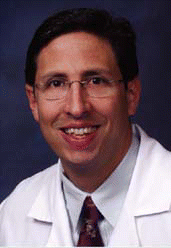Long used in a number of medical specialties, lasers offer a minimally invasive way to treat a variety of benign and malignant conditions. Otolaryngology-head and neck surgery is one of the first areas of surgery to successfully employ a number of types of lasers for medical and cosmetic purposes.
Explore This Issue
April 2007Using light energy or photons to produce a tissue effect, a laser (which is an acronym for Light Amplification by Stimulated Emission of Radiation), consists of three main components: lasing medium, which is either gas or solid; power or excitation source; and mirrors. Popular perception of lasers in otolaryngology may focus on their cosmetic benefit-to resurface a face, reshape a nose-but lasers are more than smoke and mirrors. Their benefit to treat a wide range of benign and malignant otolaryngological conditions is well documented in many studies that show the superiority of lasers over other surgical techniques in terms of hemostatis and edema, in their potential to reduce wound infection, and in their ability to induce less scarring and improve wound healing because of the minimal damage done to surrounding tissue.
 The pulsed dye laser is a safe and effective tool to treat a variety of laryngeal pathology through a flexible laryngoscope in the office without anesthesia. This instrument ushers in…the golden age of laryngology.
The pulsed dye laser is a safe and effective tool to treat a variety of laryngeal pathology through a flexible laryngoscope in the office without anesthesia. This instrument ushers in…the golden age of laryngology.
-Peter C. Belafsky, MD, MPH, PhD
For many years, the carbon dioxide (CO2) gas laser has been-and it continues to be-the most common type of laser used in otolaryngology. Novel ways to deliver the CO2 laser, as well as completely new emerging technologies, are expanding the possible uses of lasers in this field. As these technologies are increasingly used in office-based practices, the need to educate clinicians about the appropriate clinical applications of lasers as well as safety issues may become more pressing.
CO2 Laser: The Workhorse for Otolaryngologic Procedures
A variety of lasers are currently used in clinical practice, including the Nd Yag [neodymium-doped yttrium aluminum garnet], pulsed KTP [potassium titanyl phosphate], and pulsed dye laser. According to Stanley Shapshay, MD, Professor in the Division of Otolaryngology at Albany Medical College in Albany, NY, the pulsed dye and pulsed KTP are best used for vascular lesions of the larynx and facial plastic surgery (port wine stains and facial telangiectases), and the Nd Yad is used for coagulation of abnormal nasal blood vessels (hereditary hemorrhagic telangiectasia) and photodestruction of low-flow venous malformations of the head and neck as well as destruction of tumors in the airway.
Leave a Reply